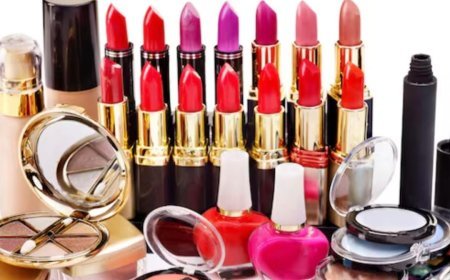TRENDS IN ANTI-HYPERPIGMENTATION COSMETICS: A CHALLENGE TO INDIAN COSMETICS MARKET

By: DR PRITIPADMA PANDA,
ASSOCIATE PROFESSOR, KIIT UNIVERSITY, BBSR
Since ancient times, white skin has been regarded as
a hallmark of beauty, high status, and higher social class. Nowadays, the quest for fairness is a challenging task for dark-tinge personnel in tropical realms, such as Asia, Africa, and the Middle East. Over the last few decades, various herbs and natural substances have been used by Asian countries, such as India, China, and Korea, for skin brightening, mainly for aesthetic and ethnic purposes. Since ancient times, it has been documented that the ‘Colorism concept” has created hierarchical classes in Asia. It is neatly clarified that roved Aryans, after capturing India, used their brighter skin tone to distinguish local Dravid’s treating themselves as a separate class. This social segregation has been established between different skin tints tempting Indian men and women to use skin-lightening substances for beautification in their culture and ethics since time immemorial. Indian Vaidyas used the roots of Saussurea lappa, seeds of Sesamum indicum, leaves of Albizia lebbeck, Pongamia pinnata, the wood of Cedrus deodara, and Berberis aristata roasted and ground with Buffalo dung as a fine powder. This paste is applied to the face for three consecutive days to achieve a lighter shade. In India, dried Crocus sativus petals with milk are provided to pregnant women for the delivery of a baby with a lustrous complexion.A paste of Lens culinaris and honey is used by homemakers in India for smooth and lustrous skin.
India has a long history of using aesthetic products for beautification.Passion for fairness has a major psychosocial role in increasing self-confidence among Indian women. Indian women mainly use turmeric and wheat husk or gram flour molded with milk to maintain a smooth and bright texture. A special bathing cosmetic that is a mixture of sesame, turmeric powder, and some herbs called ‘Upton’ is popularly used in the Hindu festival, Pongal mainly obseved in southern India for radiant skin.
Hyperpigmentation is a dermatological complaint in which some areas of the skin appear darker than the normal surrounding skin. It mainly occurs because of the overproduction of melanin pigment, excess exposure to sun rays, drug reactions, and hormonal imbalance due to pregnancy and aging. It is mainly prevalent in middle-aged and elderly people and affects the face, neck, hands, and legs. It is localized as post-inflammatory or melasma and is sometimes diffused due to metabolic causes, medication side effects, and autoimmune or infectious disorders. Metabolic causes of hyperpigmentation occur mainly due to deficiency in vitamin B12, folic acid, adrenocorticotropic hormone.
These four important hyperpigmentary disorders, melasma, lentigines, and post-inflammatory and periorbital hyperpigmentation, are common in India.
Melasma-It originates from the Greek word ‘Melas’ meaning black, which is a prevalent acquired disorder of hyper melanosis. Women have been reported to represent 90% of cases of total melasma worldwide. In India, about 20-30% of middle-aged female groups are presenting facial melasma. According to the etiopathogenesis of this disorder, sunlight, genetic abnormalities, pregnancy, hormonal imbalances, and frequent use of oral contraceptives, chemical cosmetics, and drugs may be regarded as important traits.
Post-inflammatory hyperpigmentation-
It is an acquired disorder, mainly a consequence of inflammatory reactions caused by traumatic disorders, psoriasis, allergic reactions, ultraviolet rays exposure, skin irritation, and pimples.It has a remarkable psychological impact on colored patients, as these changes occur at a higher frequency and most of the time occurs in darker-skinned people. Overproduction of melanin or irregular dispersion of pigments after cutaneous inflammation causes post-inflammatory hyperpigmentation .
Lentigines-Actinic lentigines are also known as solar lentigines. They are light brown to dark brown spots, developed mainly in solar-prone areas. The affected sites of occurrence are hands, forearms, and face. This disorder is mainly observed in fair-skinned people and vis more prevalent in India.

Periorbital hyperpigmentation-The semi-circular brown to dark brown macules that developed around the eyelids caused periorbital hyperpigmentation. It is also commonly called dark circles under the eyes. This disorder mainly affects tiny aged groups and homemaker females due to irregular personal habits and lifestyles, such as less sleep, myopia, watching television, and the use of low-graded chemical cosmetics. Females are more prevalent to this type of disorder because of familiar stress, anemia, nutritional deficiency, menstrual disturbances, hormonal imbalances, and chronic illness. There are a number of internal and external stresses which are responsible for skin pigmentation in humans. The major external factors of hyperpigmentation are UV rays, drugs, and chemicals, while internal factors include hormones and inflammation. UV- rays induced hyperpigmentation-As skin melanin is mainly regarded as a ROS neutralizer and acts as a sunscreen agent, dark-skinned individuals are less prone to UV- ray reactions than lighter-skinned personnel. UV radiation (320-400 nm) is mainly responsible for melanin pigmentation, melanoma, and skin carcinoma but UV radiation (280-320 nm) produces skin erythrema and sunburn. Chemicals/drugs induce hyperpigmentation-Over the past few decades, investigators have clarified that chronic use of most antibiotics, diuretics, non-steroidal anti-inflammatory drugs, and psychoactive medicines are the causative factors of pigmentary disorders, whereas oral contraceptives cause discoloration of the cheeks, nose, and forehead. The antiepileptic drug, Hydantoin is responsible for brown macules on the face. Extensive use of heavy metals like Arsenic and Bismuth also cause hyperpigmentation.
Endogenous hormones induce hyperpigmentation-During pregnancy, melasma is a consequence mainly due to the elevation of estrogen, progesterone, and melanocyte-stimulating hormone. Sex hormones such as estrogen stimulates melanogenic enzymes and androgen modulates tyrosinase enzymatic activity.
Inflammation is the cause of Post-inflammatory hyperpigmentation manifests as macules of black spots with scattered, irregular, and hazy margins in the epidermal cells of the skin just after wounds, acne, dermatitis, etc. Individuals with dark complexes are more prone to this type of disorders than lighter-tinged individuals. Pollution-induced Hyperpigmentation-Hyperpigmentation is a complicated condition that is typically resistant to therapy, emotionally stressful, and linked to a lower quality of life. To stimulate hyperpigmentation, pollution may function in concert with other variables such as genetics, cumulative UV, and visible light exposure. Pollution may be a crucial component in the medical treatment of hyperpigmentation. Blue light-induced Hyperpigmentation-Blue lights are practically a high energy visible light (HEV) emitted from screens of digital devices and have a wavelength of about 390 to 500 nm. These lights have a higher penetration potential into the skin layers than ultraviolet light and cause damage to the topical surfaces, inducing oxidative stress via reactive oxygen species (ROS) and reactive nitrogen species (RNS), which are responsible for protein and lipid damage.When tested at different wavelengths, blue light has been found to induce oxidative stress, which accelerates the aging process.
The hyperpigmentation treatment is divided into either first-line or second-line therapies. Monotherapy with cosmeceuticals, such as zinc sulfate, azelaic acid, kojic acid, hydroquinone, or arbutin, is mainly prescribed in the first stage of the disorder. In recent decades, most dermatologists have prescribed hydroquinone, topical retinoids, and topical steroids combined in the name of triple combination therapy. But when some skin tone shows a reaction of retinoid dermatitis or hydroquinone sensitivity in this case dual treatment therapy may be tried. However, for chronic conditions of the disorder, we may opt for second-line therapy.The preferred second-line therapies in cosmetic clinics are chemical peel therapy and laser therapy. Chemical peeling is a technique in which chemical agents are mainly used to destroy a part of the epidermis with or without the dermis, which helps in the desquamation of lesions as well as the reconstruction of new tissues. Widely used chemicals for peeling are acids like trichloroacetic acid 10-25%, salicylic acid 20-30%, Glycolic acid 20-70%, or Jessner’s solution. Laser treatment is defined as a technique that uses stimulated emission of radiation, where amplification of light is carried out. Damaged or dysfunctional tissues due to hyperpigmentary disorders are subjected to laser therapy, which helps in relieving pain and inflammation.There was no need for any drugs or surgery. It is a highly sophisticated technology in the recent fashion world that mainly includes fractional laser, QS alexandrite, Q-switched ruby, and QS neodymium: yttrium-aluminum-garnet types. Laser therapy is mainly used for the treatment of melasma types of hyperpigmentation, but fractional laser therapy is the best choice in recent trends for the treatment of post-inflammatory hyperpigmentation and melasma. All these types of therapies also have many side effects. Hence, continuous research is ongoing to develop safe, economically feasible, and internationally acceptable herbal therapies.
India is one of the world’s largest economies. The Indian economy's rapid growth rate is the driving force behind Indian consumerism. With a young population just beginning to accept dramatic lifestyle changes, India offers a significant market. The steady increase in Indian buying power gives organized retailing an excellent opportunity and creates an atmosphere for the cosmetic industry. Analyst forecasts indicate that India has the potential to be identified as the fastest-growing fairness cream market. As Indians are obsessed with being fair and beautiful, the Indian cosmetic market, particularly the fairness cream market, enjoys strong market growth.With rising rivalry, leaders of the fairness market need to reassess their marketing strategies. By concentrating their resources on the advantages of a changing consumer base, businesses can stand as leaders in their respective markets. In order to attract a broader consumer base, reputable businesses and brands have also felt the need for behavioral testing.













































